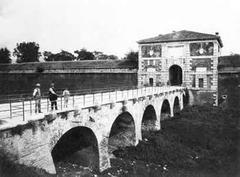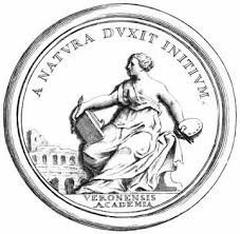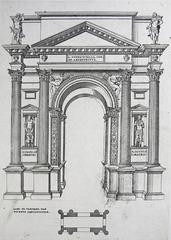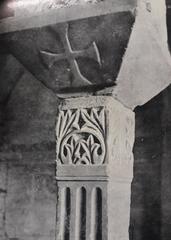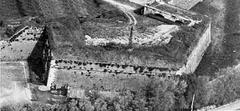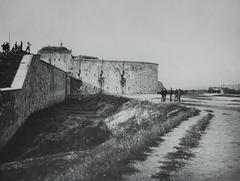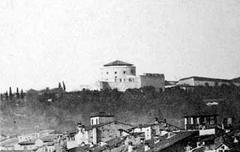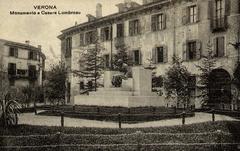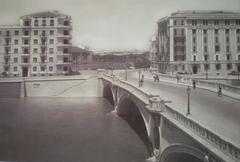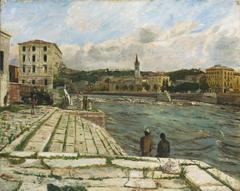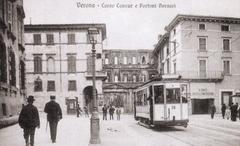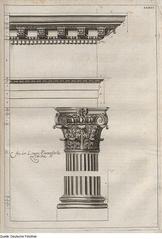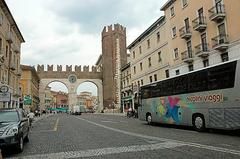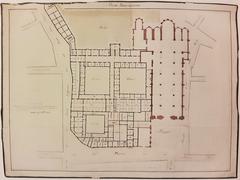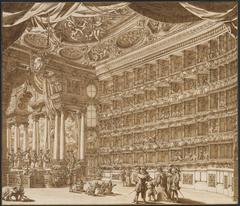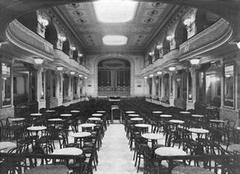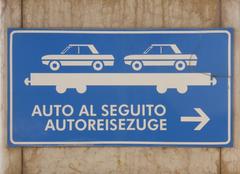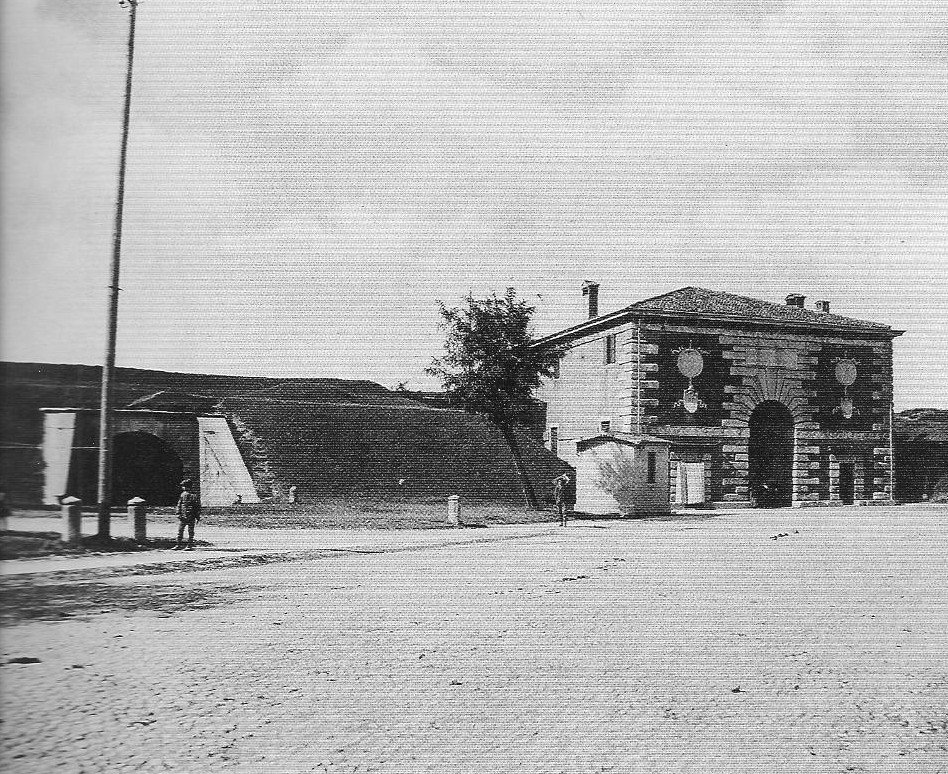
Visiting Porta San Zeno: Hours, Tickets, and Attractions in Verona
Date: 01/08/2024
Introduction
Verona, a city steeped in history and romance, is home to many architectural marvels, one of which is Porta San Zeno. Constructed in 1542 by the celebrated architect Michele Sanmicheli, Porta San Zeno is a quintessential example of Renaissance military architecture and a testament to Verona’s rich cultural heritage (Museo di Castelvecchio). Located near the Basilica di San Zeno, the gate was named in honor of Verona’s patron saint, Saint Zeno, and served as a crucial part of the city’s defensive network (Indigo Verona). Porta San Zeno’s design, characterized by its blend of utilitarian and artistic elements, reflects the economic constraints and military needs of its time. The gate’s simplicity, combined with Sanmicheli’s architectural finesse, makes it a significant historical monument worth exploring. Visitors can delve into its storied past, admire its architectural features, and enjoy the vibrant cultural events that occasionally breathe new life into this ancient structure (Heritage Science Journal).
Table of Contents
- Historical Background of Porta San Zeno
- Cultural and Historical Context
- Visitor Tips for Porta San Zeno
- Nearby Attractions
- FAQ
- Comparative Analysis
- Conclusion
Historical Background of Porta San Zeno
Origins and Construction
Porta San Zeno, an integral part of Verona’s historical fortifications, was constructed in 1542 under the direction of the renowned architect Michele Sanmicheli. Sanmicheli, who also designed Porta Nuova and Porta Palio, infused Renaissance architectural elements into the gate’s design. The construction of Porta San Zeno was relatively swift, taking approximately one year to complete. The gate was named after the nearby Basilica di San Zeno, dedicated to Verona’s patron saint, Saint Zeno.
The gate’s design is characterized by its simplicity and functionality, likely due to economic constraints at the time. It features a square plan with a wide central hall, side walkways, and a space designated for the military guard. The use of materials was pragmatic, combining large painted brick sections with limited stonework. This design was a replication of Sanmicheli’s earlier work on Porta Zara in Dalmatia (Museo di Castelvecchio).
Military and Artistic Significance
Porta San Zeno served dual purposes: military defense and artistic expression. The highest floor of the gate was equipped to house heavy artillery with long-range capabilities, essential for defending the city against potential invasions (Indigo Verona). The gate’s strategic location and robust construction made it a critical component of Verona’s defensive network.
In addition to its military functionality, Porta San Zeno is a testament to Renaissance artistry. Sanmicheli’s architectural prowess is evident in the gate’s design, which harmoniously blends utilitarian and aesthetic elements. The gate’s enduring presence between the ramparts, which have otherwise been demolished in other parts of the city, underscores its historical and cultural significance (Indigo Verona).
Renovations and Modern Use
Over the centuries, Porta San Zeno has undergone several renovations to preserve its structural integrity and historical value. During the Venetian era in the 16th century, the gate was enlarged, and further modifications were made in the Austrian era, including the addition of two side passages (Indigo Verona).
In recent years, Porta San Zeno has been revitalized through restoration efforts spearheaded by the “Bacanal del Gnoco,” the traditional Veronese Carnival. These efforts have safeguarded many of the gate’s internal rooms from neglect and environmental damage, ensuring that this historical monument remains accessible to future generations (Museo di Castelvecchio).
Cultural and Historical Context
Porta San Zeno is not only a historical artifact but also a cultural symbol of Verona’s rich heritage. The gate’s proximity to the Basilica di San Zeno, a significant religious site, adds to its cultural importance. The basilica itself is renowned for its stunning Romanesque architecture and the legendary bronze doors, which are masterpieces of medieval art (Heritage Science Journal).
The gate’s historical context is further enriched by its association with the various phases of Verona’s fortification. The city underwent multiple stages of defensive construction, starting from the Roman era, through the municipal era in the 12th century, and culminating in the early 14th century under the Lordship of the Scaligeri. Porta San Zeno stands as a witness to these transformative periods in Verona’s history (Indigo Verona).
Visitor Tips for Porta San Zeno
Accessibility
Porta San Zeno is easily accessible from the city center. Visitors can reach the gate by foot, bike, or public transport. The nearby Basilica di San Zeno is also worth a visit, offering a glimpse into Verona’s religious and architectural history.
Guided Tours
To fully appreciate the historical and cultural significance of Porta San Zeno, consider joining a guided tour. These tours often provide in-depth insights into the gate’s construction, historical context, and architectural features.
Photography
The gate’s Renaissance architecture and strategic location make it a perfect spot for photography. Capture the intricate details of the gate and the surrounding ramparts to take home a piece of Verona’s history.
Local Events
Check the local event calendar for any festivals or events taking place at Porta San Zeno. The “Bacanal del Gnoco” is a particularly vibrant event that showcases Veronese culture and traditions.
Verona Card
Invest in a Verona Card for discounted or free access to many of the city’s attractions, including Porta San Zeno. The card also offers unlimited travel on the ATV transport system, making it a convenient option for tourists (Bookings For You).
Visiting Hours and Tickets
Porta San Zeno is typically open to visitors from 9 AM to 6 PM daily, but it’s always best to check the official website or local guides for the most current visiting hours. Ticket prices are modest, often included in the Verona Card or available for purchase on-site.
Nearby Attractions
When visiting Porta San Zeno, take some time to explore nearby attractions such as the Basilica di San Zeno, Castelvecchio Museum, and the Verona Arena. These sites provide a more comprehensive understanding of Verona’s history and culture.
FAQ
What are the visiting hours for Porta San Zeno? Porta San Zeno is generally open from 9 AM to 6 PM daily, but it’s advisable to check current schedules before planning your visit.
How much do tickets to Porta San Zeno cost? Ticket prices are modest and often included in the Verona Card. Single tickets can also be purchased on-site.
Are guided tours available at Porta San Zeno? Yes, guided tours are available and highly recommended to gain in-depth insights into the gate’s history and architectural significance.
Is Porta San Zeno accessible for disabled visitors? Efforts have been made to ensure accessibility, but it’s best to check specific accommodations in advance.
Comparative Analysis
Porta San Zeno’s design can be compared to other gates designed by Sanmicheli, such as Porta Nuova and Porta Palio. These gates share similar architectural features, highlighting Sanmicheli’s consistent design approach and influence on Verona’s Renaissance architecture (Comune Verona).
Conclusion
Porta San Zeno stands as a prominent symbol of Verona’s historical and architectural legacy. Its construction under Michele Sanmicheli’s guidance highlights the fusion of military functionality and Renaissance artistry that defined the era. Over the centuries, this gate has witnessed various phases of renovation and restoration, ensuring its preservation for future generations (Indigo Verona). Today, Porta San Zeno remains a key attraction for visitors, offering insights into Verona’s rich past and serving as a gateway to exploring the city’s other historical sites like the Basilica di San Zeno and the Castelvecchio Museum (Museo di Castelvecchio). Whether you’re a history enthusiast, an architecture aficionado, or a casual traveler, Porta San Zeno provides a unique glimpse into the cultural fabric of Verona. To make the most of your visit, consider joining a guided tour, exploring nearby attractions, and immersing yourself in the local culture and events (Bookings For You).
References
- Museo di Castelvecchio. Explore Porta San Zeno: Visiting Hours, Tickets, and Historical Significance in Verona. Museo di Castelvecchio
- Indigo Verona. Verona’s Gates: A Historical Itinerary. Indigo Verona
- Heritage Science Journal, 2024. The Bronze Doors of Basilica di San Zeno. Heritage Science Journal
- Bookings For You. Verona Travel Guide: A Comprehensive Guide to Verona. Bookings For You

